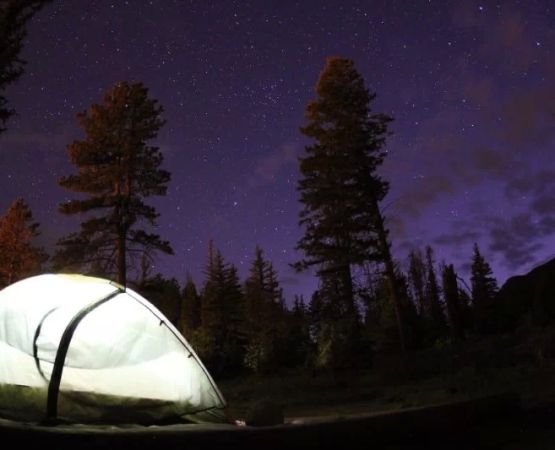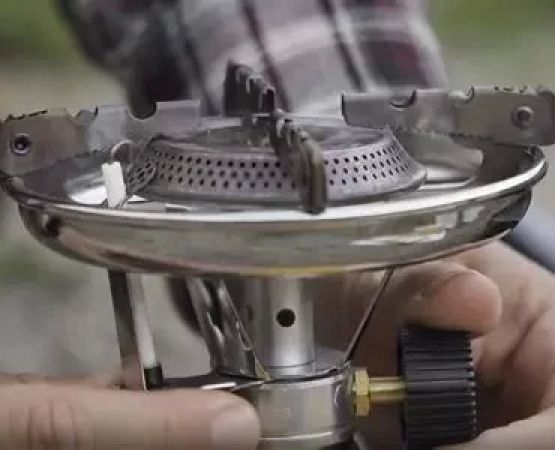How to Prevent Injuries While Hiking and Camping
As someone who enjoys hiking and camping regularly, I know that these outdoor adventures come with their fair share of risks. Whether you’re trekking up a mountain trail or setting up camp in the woods, injuries can happen if you're not careful. Over the years, I’ve learned some essential strategies that can help reduce the risk of getting hurt while hiking and camping. In this guide, I’ll share what I've learned and the steps you can take to ensure your safety during your outdoor adventures.
1. Choose the Right Hiking and Camping Gear
The first step in preventing injuries is ensuring you have the right gear. When I first started hiking, I didn’t pay as much attention to my equipment, and it led to discomfort and even some minor injuries. Over time, I realized that choosing the right shoes, backpacks, and camping equipment can make a huge difference in preventing injuries.
1.1 Footwear is Key
Your shoes or boots are your most important piece of hiking gear. Ill-fitting shoes can lead to blisters, sprained ankles, and fatigue, which all increase the risk of injury. I recommend investing in high-quality hiking boots that provide ample support, cushioning, and protection against rocks and uneven terrain. Make sure they fit properly and are broken in before you hit the trail.
1.2 Use a Supportive Backpack
When camping, a poorly fitted backpack can strain your shoulders and back, leading to long-term discomfort or injury. I’ve found that a backpack with an adjustable harness and a good waist belt can significantly reduce the load on your shoulders. Ensure your backpack is light enough for you to carry comfortably without straining your body.
2. Warm-Up and Stretch
Before you start your hike, it’s essential to warm up your muscles. I didn’t use to think much about stretching before a hike, but I quickly learned that stretching before physical activities can help prevent injuries. Hiking involves a lot of uphill and downhill movements, and having flexible muscles can minimize the chance of strains or sprains.
2.1 Dynamic Stretching
Dynamic stretching—such as leg swings, lunges, or arm circles—can help loosen up your muscles before you hit the trail. I always try to do some dynamic stretches for my legs, hips, and back to prepare for the physical demands of hiking. These stretches help activate the muscles you’ll be using the most, ensuring they’re ready for the hike ahead.
2.2 Warm Up Gradually
I’ve learned that it’s essential to start hiking slowly and gradually increase your pace. Rushing into a fast-paced hike can lead to injury, especially if your muscles are not properly warmed up. I find it’s helpful to start with a light walk and gradually build up speed as my muscles get accustomed to the movement.
3. Stay Hydrated and Energized
One of the most important lessons I’ve learned from my hiking trips is the significance of hydration. Dehydration can cause fatigue, dizziness, and muscle cramps, which increase the risk of injury. Staying hydrated helps your body maintain optimal function, especially during long hikes or camping trips in the heat.
3.1 Drink Water Regularly
Even if you don’t feel thirsty, it’s crucial to drink water regularly when hiking. I make it a point to sip water throughout my hike, especially during challenging stretches of the trail. Carrying a water reservoir or a bottle that’s easy to access can help you stay on track. Avoid waiting until you’re thirsty to drink, as by then, your body may already be dehydrated.
3.2 Pack Energy-Sustaining Snacks
Hiking and camping require a lot of energy, and having the right snacks on hand is essential. I always carry lightweight snacks that provide sustained energy, like trail mix, granola bars, and dried fruit. These snacks keep my energy levels stable, ensuring I can continue hiking without getting overly fatigued.
4. Pay Attention to Trail Conditions
During my early hiking days, I didn’t always pay enough attention to trail conditions. This lack of awareness led to some close calls with tripping on rocks or slipping on wet surfaces. I’ve learned that understanding and respecting trail conditions can go a long way in preventing injuries.
4.1 Watch for Obstacles
It’s easy to get distracted while hiking, but it’s essential to remain aware of your surroundings. Trails may have rocks, roots, or other obstacles that can cause you to trip or stumble. I always make sure to watch my step and avoid rushing over difficult terrain. When I’m hiking in areas with loose rocks or muddy conditions, I take extra care to move cautiously to avoid accidents.
4.2 Check the Weather
Weather conditions can greatly affect the safety of your hike. I’ve learned the hard way that hiking in heavy rain or extreme heat can increase the risk of injuries like slipping or heatstroke. Before embarking on a hike, I always check the weather forecast and adjust my plans accordingly. If the weather seems too extreme, I’ll postpone my hike or choose a safer, more sheltered trail.
5. Know Your Limits and Take Breaks
One of the most important things I’ve learned about hiking and camping is to know my limits. Hiking is physically demanding, and pushing yourself too hard can result in exhaustion or injury. I’ve found that taking frequent breaks is essential, especially during long hikes or challenging terrains.
5.1 Listen to Your Body
If I start feeling fatigued, sore, or dizzy, I always listen to my body and take a break. I’ve learned that pushing through discomfort can lead to injuries, and it’s better to rest and recover than to risk something more serious. Taking breaks also gives me the opportunity to hydrate, eat snacks, and reenergize for the next leg of the hike.
5.2 Take Rest Stops
I also recommend taking rest stops at regular intervals. If you’re on a long hike, taking breaks every 30 minutes to an hour allows your body to recover and prevents exhaustion. These breaks are an opportunity to enjoy the scenery and reset your energy levels before continuing on the trail.
6. Prepare for Emergencies
Finally, I always prepare for emergencies when hiking and camping. Even with the best prevention methods, accidents can still happen, and having a plan in place can make all the difference. I always carry a first aid kit and know how to use the items in it. I also let someone know my hiking plans and estimated return time in case something goes wrong.
6.1 Carry a First Aid Kit
A good first aid kit is a must for any hiking trip. I make sure mine includes essentials like bandages, antiseptic wipes, blister treatments, and pain relievers. I also bring items for treating insect bites, muscle aches, and sprains, as these are common issues I’ve encountered on the trail.
6.2 Know Emergency Contacts
Before heading out, I always make sure I have emergency contact information on hand. This includes knowing the nearest hospital or ranger station and keeping a phone with a portable charger for emergency use. I also make sure to inform someone about my hiking route and expected return time to ensure help can be reached quickly if needed.






